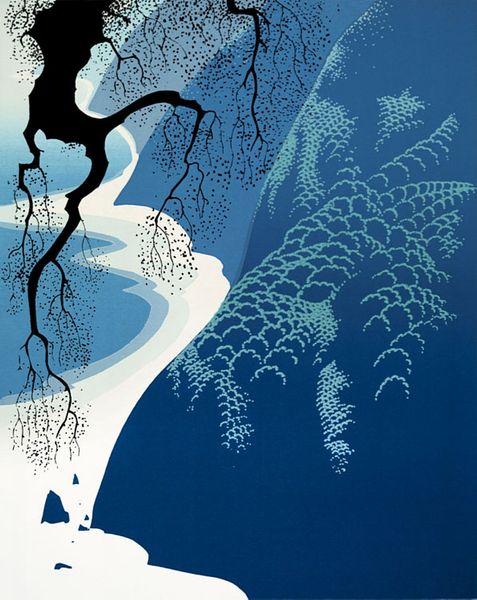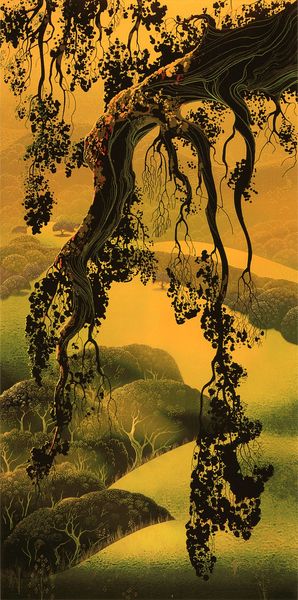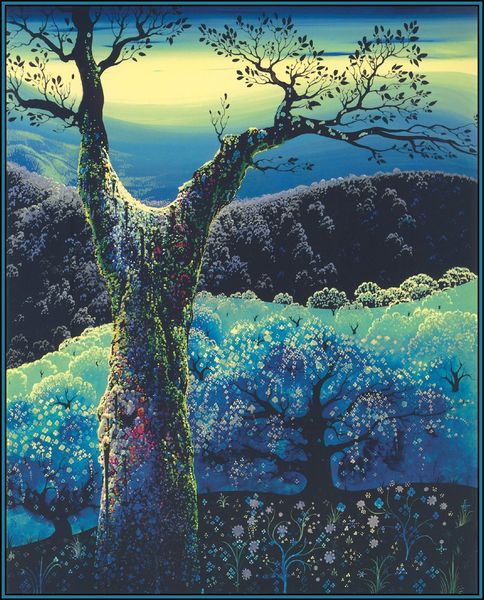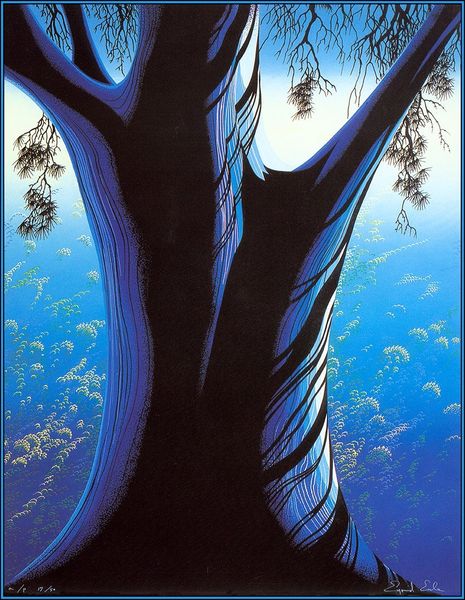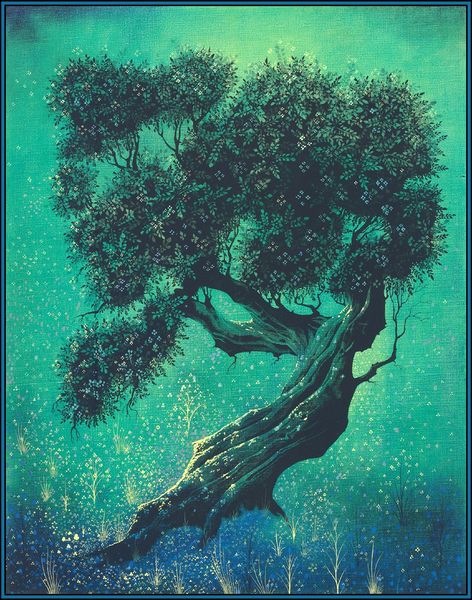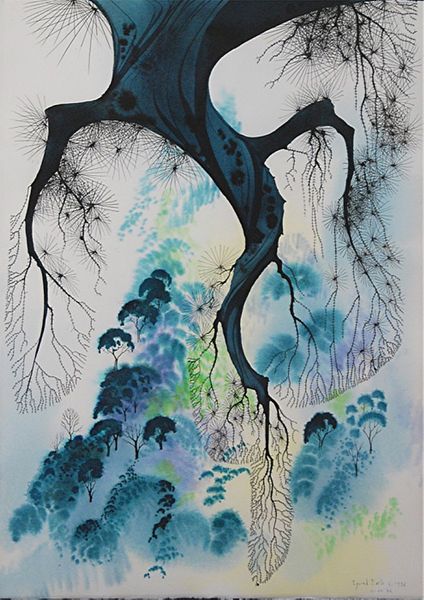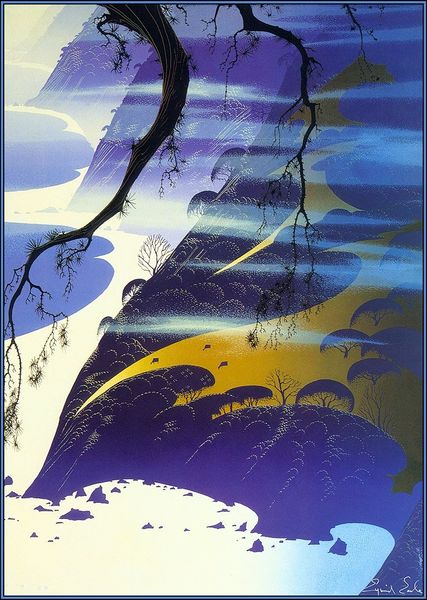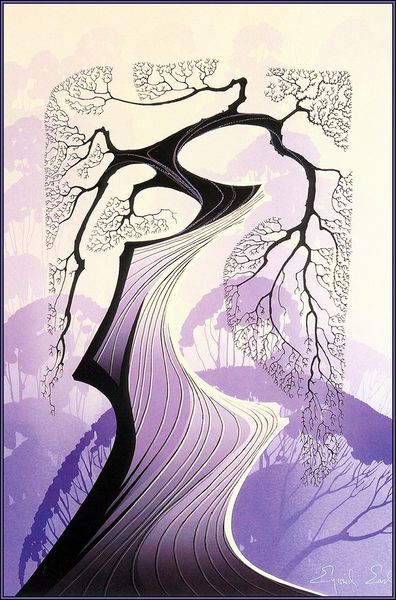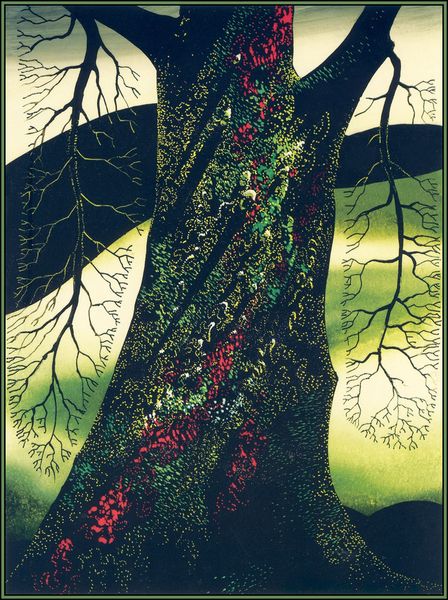
painting, acrylic-paint
#
tree
#
painting
#
landscape
#
acrylic-paint
#
naive art
#
abstraction
#
abstract art
#
modernism
Copyright: Eyvind Earle,Fair Use
Editor: Here we have Eyvind Earle's "Winter Bonsai" from 1982, an acrylic painting. I'm struck by how the stylized tree seems both delicate and monumental against the icy blues. What do you see in this piece? Curator: This image makes me think about our relationship with nature, and how cultural lenses impact that. The 'bonsai' aspect is fascinating – the art of cultivating miniature trees, a tradition steeped in Japanese philosophy, aesthetics, and even spiritualism. What happens when we transplant that tradition and its visual vocabulary into a Western modernist landscape? Editor: So, it’s not just a pretty picture, but a commentary on cultural exchange? Curator: Precisely! Earle takes a traditionally controlled form of nature, the bonsai, and renders it in his signature stylized landscapes. Is he subtly questioning our attempts to control the natural world? Think about the historical context: the rise of environmental consciousness in the late 20th century. Could this "Winter Bonsai" be seen as a visual meditation on the power and fragility of nature, our desire to shape it, and the potential consequences? Editor: That's a perspective I hadn't considered. The starkness of the colors could reflect that potential for loss. Curator: And perhaps the abstraction offers us space to reflect on our own positions within these complex relationships. Does it make you reconsider its seemingly 'naive art' style tag? Editor: Absolutely. I'll never look at a bonsai the same way again! It's amazing how much history can be contained in what appears to be a simple landscape. Curator: Indeed. Art invites us to question, to explore, and to engage critically with the world around us.
Comments
No comments
Be the first to comment and join the conversation on the ultimate creative platform.

